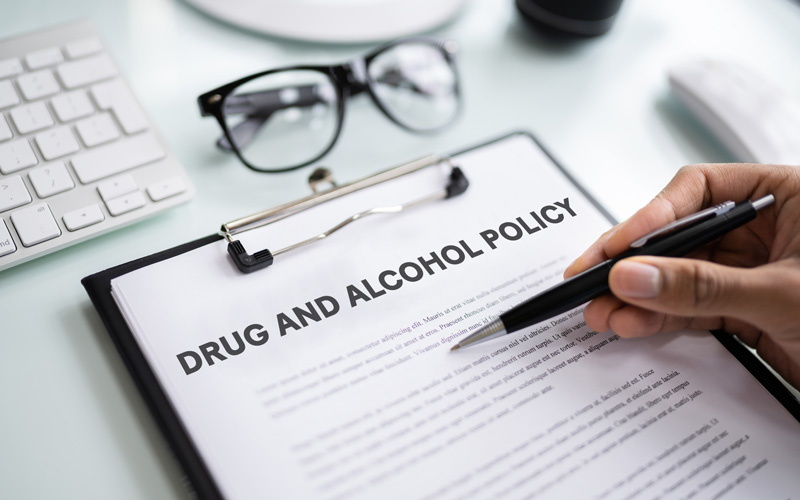Running a business in Australia comes with unique challenges, especially when it comes to workplace safety. Social drinking after work, casual cannabis use, or even prescription medications can quickly blur the line between normal behaviour and serious safety risks. Without a clear drug and alcohol policy for your business, you could face accidents, legal issues, or unexpected downtime.
A comprehensive drug and alcohol policy does more than set rules—it gives you a practical framework to manage risks, protect your employees, and maintain a productive workplace. It ensures that everyone, from casual staff to managers, understands the standards and consequences surrounding substance use.
The Benefits of Establishing a Drug and Alcohol Policy
You might think, “My team is made up of responsible adults—they can manage themselves.” However, even one instance of impairment can have serious consequences, especially in roles where focus and precision are critical. For example, forklift operators, delivery drivers, or healthcare staff. A single lapse could lead to accidents, costly downtime, or even legal liability.
That’s where a comprehensive drug and alcohol policy comes in. When done right, it delivers three key benefits:
- Clarifies expectations: It defines exactly when, where, and how substance use is prohibited. For example, no alcohol during work hours, even at office social events.
- Supports workplace safety: By addressing impairment risks, it prevents accidents and protects both employees and your business.
- Ensures fairness: Consistent rules for everyone, from interns to executives. It reduces the risk of discrimination claims.
Overall, by implementing a clear drug and alcohol policy for your business, you demonstrate that employee safety and company integrity are top priorities.
Steps to Build a Drug and Alcohol Policy for Your Business
Here’s how to develop a drug and alcohol policy that truly works for your team and keeps your workplace safe:
1. Consult Your Team and Understand the Law
Start by talking to employees, managers, and health and safety representatives. Their insights ensure your policy is practical, not just theoretical. Next, anchor your policy in Australian law:
- Privacy Act 1988: Governs how you handle sensitive information from drug tests.
- OHS Act 2004: Requires you to eliminate workplace risks “as far as reasonably practicable.”
- WHS regulations 2025: Requires you to comply with Work Health and Safety Regulation (WHS) 2025, including industry-specific laws for mining and transporting dangerous goods.
2. Define Clear Rules and Consequences
Spell out the following in your drug and alcohol policy for your business:
- Prohibited substances: Include illegal drugs, misuse of prescriptions, and alcohol during work hours.
- Testing protocols: Decide whether you will conduct pre-employment tests, random screenings, or post-incident tests. Ensure your testing kits meet Australian Standards, like the First Step Oral Fluid Drug Screen Device (Verified to AS/NZS 4760:2019).
- Disciplinary actions: Use graduated responses. For instance, a first-time office offense may warrant a warning, while a forklift driver under the influence might face immediate suspension.
3. Support Your Employees
A strong drug and alcohol policy balances accountability with support. Consider including:
- Employee Assistance Programmes (EAPs): Confidential counseling for staff struggling with addiction.
- Training: Equip managers to spot impairment signs and respond appropriately.
- Return-to-work plans: Consider helping employees reintegrate after treatment without stigma.
If you want to back your policy with reliable testing, Australia Drug Testing offers drug testing kits certified to Australian standards, providing accurate results quickly and helping you maintain a safe, compliant workplace.
Common Mistakes to Avoid in Your Drug and Alcohol Policy
Even with the best intentions, mistakes happen. Watch out for these pitfalls when creating a drug and alcohol policy for your business:
- Ignoring workplace culture: Abruptly banning alcohol in a team that enjoys social drinks can backfire. Instead, provide clear guidelines for social events, like “two-drink maximum” or “non-alcoholic options available.”
- Skipping regular reviews: Drug trends and laws evolve. Update your policy annually to include new substances like cannabis edibles or vaping products.
- Overlooking prescription medications: Employees may be taking medications that affect alertness. Require disclosure and offer adjusted duties when necessary.
Ultimately, by avoiding these mistakes, your drug and alcohol policy becomes a functional document that evolves with your business.
Conclusion: Protect Your Business with a Strong Drug and Alcohol Policy
A well-designed drug and alcohol policy for your business does more than just comply with regulations—it actively prevents accidents, reduces absenteeism, and ensures every employee understands what’s expected of them. When your team knows that rules are clear, consistent, and fairly enforced, you build trust while protecting your workplace from costly incidents.
If you want to strengthen your policy and have confidence that it’s backed by reliable testing, contact Australia Drug Testing for certified drug testing kits that deliver fast and accurate results.


